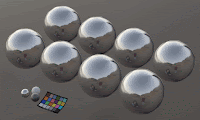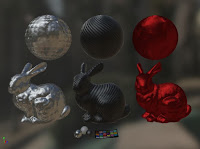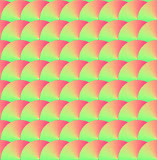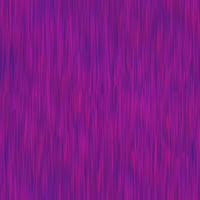I've tested my maps in modified Heidrich–Seidel and Ward anisotropic shader models, but none of the BRDF methods.
The shader I've written to demo here is an indirect blinn-phong which bends the cube map lookup using a "tangent map".(which is what I'm calling the aforementioned bake vector map)
I proofed this work on a series of low poly balls(rounded box topology, see UV layout).
There are two sampling methods here, a single sampled cube map with warped lookup, the other uses 16 cube map samples with an offset lookup.
The multi-sample method would be too expensive for game play rates.
It's included here for quality comparison to the warped single sample method.

Facet direction and sampling method notes.

UV layout
Baked tangent map with notes
Baking arbitrary vector maps in tangent space?
I'm sure a good graphics engineer could explain how sampling normals along a poly projected view matrix result in a tangent space normal map, but I don't think I'd understand or be able to roll my own.
So instead I use standard normal map baking by temporarily setting the surface normals to the whatever I want then baking normals.
For the low poly test case balls seen above, I used hi-poly spheres with the poles oriented in X and Y. Then set the vert normals on the hi res spheres to it's binormals in two of them and tangents in two of them. I could have rotated the UVs on two of them and used just binormals for all instead. Then ran a typical tangent space normal map baking process to get the tangent map seen above.
In the case of baking the hair tangent map seen below I baked one pass from hi-res hair geometry(which has uniform UV layout, so I could set the normal from the binormals) and another from a low res mesh with "combed" vectors***.
Aniso effect range 0 to 1-ish, there's no max range, but starts to look exaggerated past 1.

Brushed metal, carbon fiber, Christmas ornament example in different light probes



Carbon fiber tangent map

Christmas ornament tangent map

Hair example with anisotropic indirect specular
For comparison, isotropic indirect specular
(i.e. texCUBE(sampler, -reflect(view, normal))
Tangent map baked from hi-res hair, which can be very noisy, so also blended with low res.
Not sure how to get this done in 3d texture painting but vert color painting is pretty easy.
So "combed" vectors can be done by painting vert colors. The gist is getting the world space direction vector of the stroke, compressing the vector to 0-1 range and setting the vert color to that. Then I set the vert normals to the vert color, which is a direction vector, before baking tangent space normals.
To be clear I've written loads of scripts around temporarily setting the vert normals from various sources and baking. Also, the vert combing is part of a large hair authing toolset which is used at work, so can't share more then I had before starting work here.




